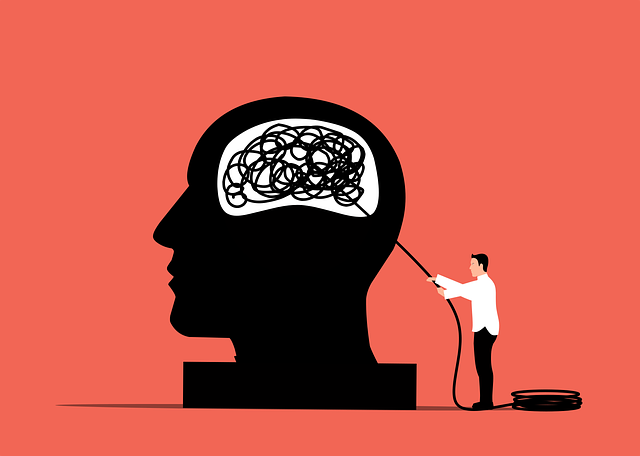Cold therapy, including ice packs, cold water immersion, and cryotherapy, is a powerful and accessible treatment for migraines and tension headaches. By constricting blood vessels and reducing inflammation, these methods offer significant pain relief and can decrease the frequency of migraine attacks. Cryotherapy, in particular, provides extreme cold exposure to induce mild hypothermia and block pain signals. Integrating these simple yet effective techniques into daily routines can be a game-changer for managing chronic headache conditions, with scientific evidence supporting their benefits.
Suffering from tension headaches or migraines? Consider exploring the power of cold therapy. This natural approach offers a simple yet effective solution for immediate relief and long-term management. From traditional ice packs to advanced techniques like cryotherapy and cold water immersion, discover how these cooling techniques can alleviate migraine pain and reduce headache frequency. Learn about the science-backed benefits of cold compresses and transform your at-home care routine today.
Understanding Cold Therapy for Migraines and Tension Headaches
Understanding Cold Therapy for Migraines and Tension Headaches
Cold therapy has emerged as a popular and effective treatment option for both migraines and tension headaches. Techniques such as applying an ice pack, engaging in cold water immersion, or using cryotherapy involve exposing the body to extreme cold to provide migraine pain relief. The benefits of cold compresses for headaches are well-documented, with many individuals reporting significant reductions in both frequency and intensity of attacks. By constricting blood vessels and reducing inflammation, cold therapy helps to alleviate the symptoms associated with migraines and tension headaches.
Whether it’s using a simple ice pack for migraine relief or exploring more advanced cooling techniques like cryotherapy for migraines, understanding how these methods work can help individuals make informed decisions about their treatment regimens. Cold water immersion, for instance, has been shown to induce a state of vasoconstriction, which can prevent the dilation of blood vessels that often contributes to headache pain. As such, integrating cold therapy into one’s routine could be a game-changer in managing these debilitating conditions.
Ice Packs: A Simple Yet Effective Solution for Migraine Relief
Ice packs are a simple yet effective solution for alleviating migraine pain. The application of cold directly to the affected area can significantly reduce inflammation and constrict blood vessels, which helps to minimize nerve irritation and muscle tension associated with migraines. By reducing blood flow to the brain, ice packs can also help to alleviate the intense pulsing or throbbing sensations that often accompany migraine attacks.
The benefits of using ice packs for migraine relief extend beyond immediate pain reduction. Regular use of cold compresses can help prevent future migraines by reducing nerve sensitivity and improving blood circulation in the head and neck region. Moreover, cold therapy is a non-invasive, drug-free approach that can be easily incorporated into daily routines, making it an attractive alternative or adjunctive treatment for those seeking to manage their migraines naturally and effectively.
Exploring Advanced Techniques: Cryotherapy and Cold Water Immersion
Exploring Advanced Techniques: Cryotherapy and Cold Water Immersion
For those seeking more than traditional ice packs for migraine relief, cryotherapy offers a promising alternative. This extreme cold therapy involves brief exposure to extremely low temperatures, typically in a specialized chamber. The benefits of cold compresses for headaches are well-documented, and cryotherapy takes this to the next level. By inducing mild hypothermia, it can reduce inflammation, constrict blood vessels, and block pain signals, providing significant migraine pain relief with cold therapy.
Cold water immersion is another effective cooling technique for headaches. Submerging parts of your body in ice-cold water triggers a physiological response that helps to alleviate pain. This method has been shown to decrease muscle tension and inflammation associated with both tension headaches and migraines. Whether it’s a cold shower, an ice bath, or targeted cold water applications, these techniques offer a natural, non-invasive approach to managing chronic headache conditions.
Benefits of Cold Compresses: Science-Backed Pain Relief for Headaches
Cold therapy has emerged as a popular and effective treatment option for both tension headaches and migraines. One of the simplest yet powerful tools in this regard is the cold compress or ice pack. Applying an ice pack to the head, neck, or scalp can provide immediate relief from migraine pain by reducing blood flow to the affected areas, which helps constrict dilated blood vessels that are often responsible for the intense throbbing sensation associated with migraines and tension headaches.
Science has backed up the benefits of cold therapy for headaches. Research shows that cryotherapy (the use of extreme cold) can significantly reduce migraine frequency and intensity. Even a simple ice pack or cold water immersion can stimulate the release of endorphins, our body’s natural painkillers, offering relief from acute headache symptoms. Additionally, cooling techniques like these have been linked to anti-inflammatory effects, which can help calm nerve endings that contribute to headaches.
Cold therapy offers a simple yet effective solution for both tension headaches and migraines. From traditional ice packs to advanced techniques like cryotherapy and cold water immersion, these cooling techniques have been scientifically proven to provide significant migraine pain relief. Incorporating cold compresses into your headache management routine can offer natural and fast-acting relief, making them a valuable tool in navigating the world of migraines.
